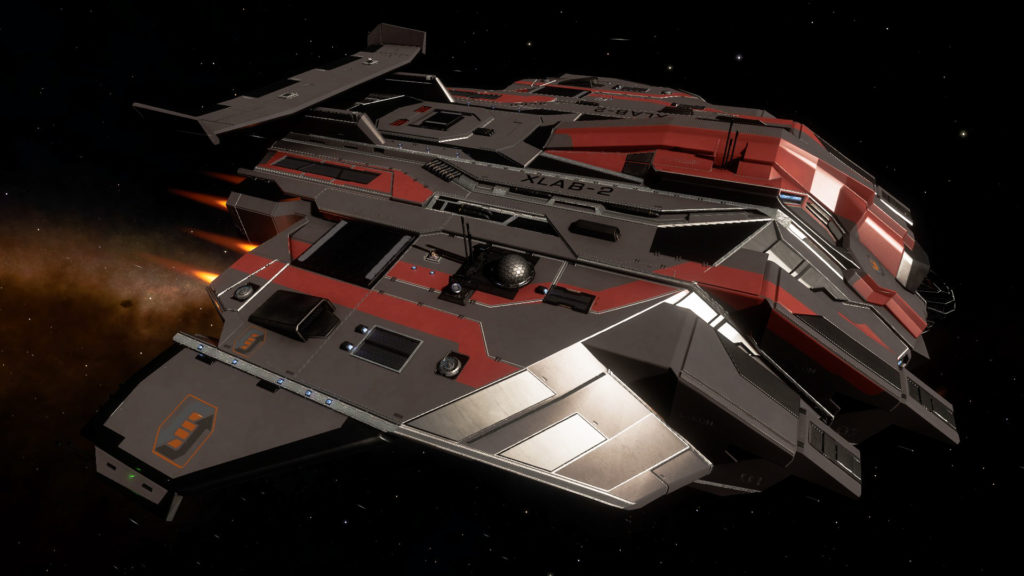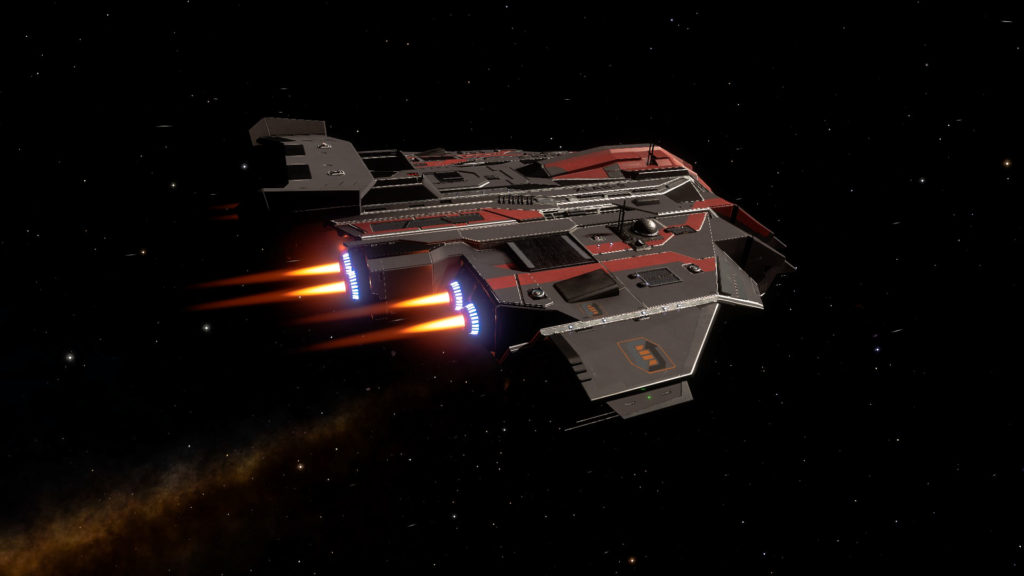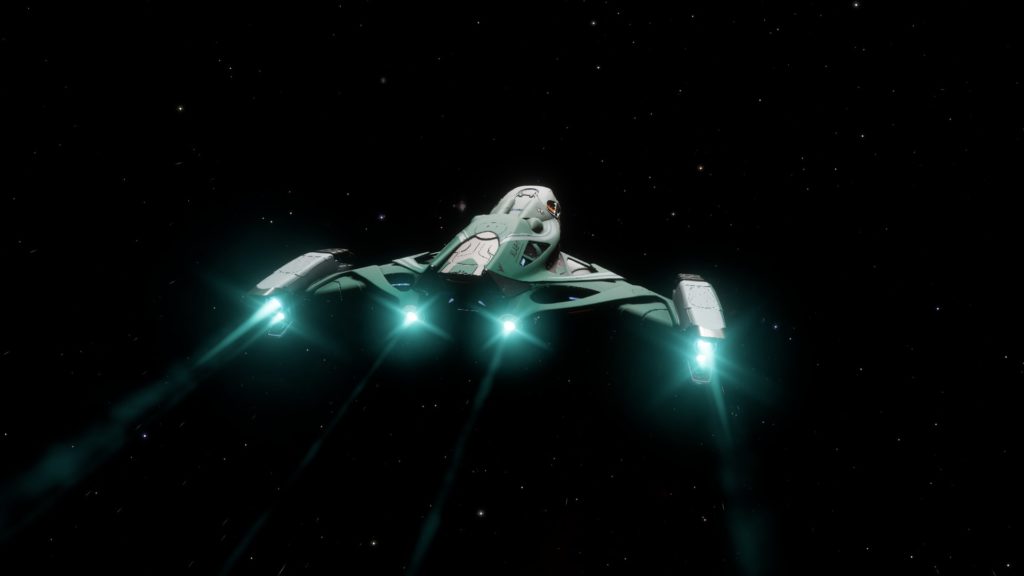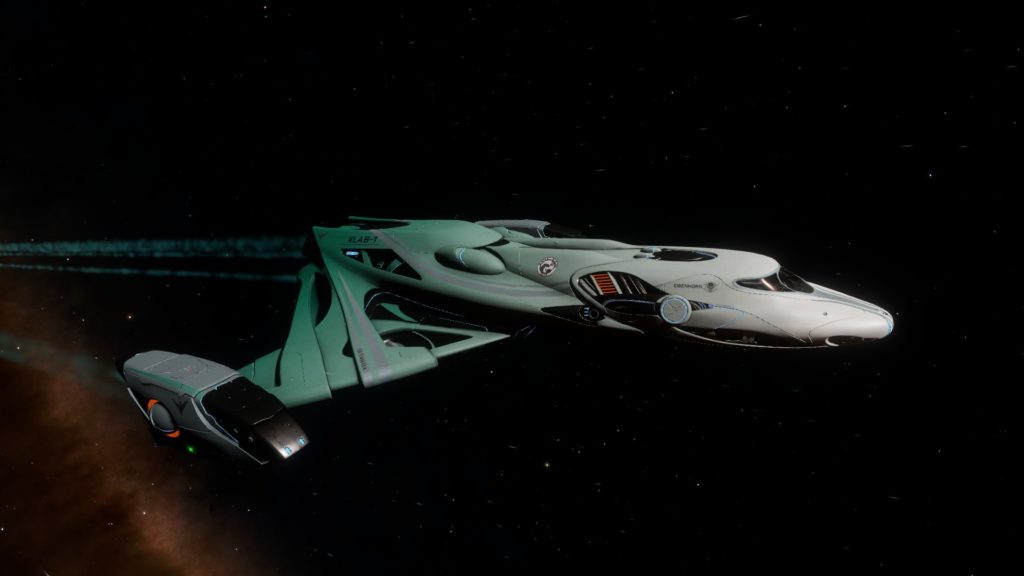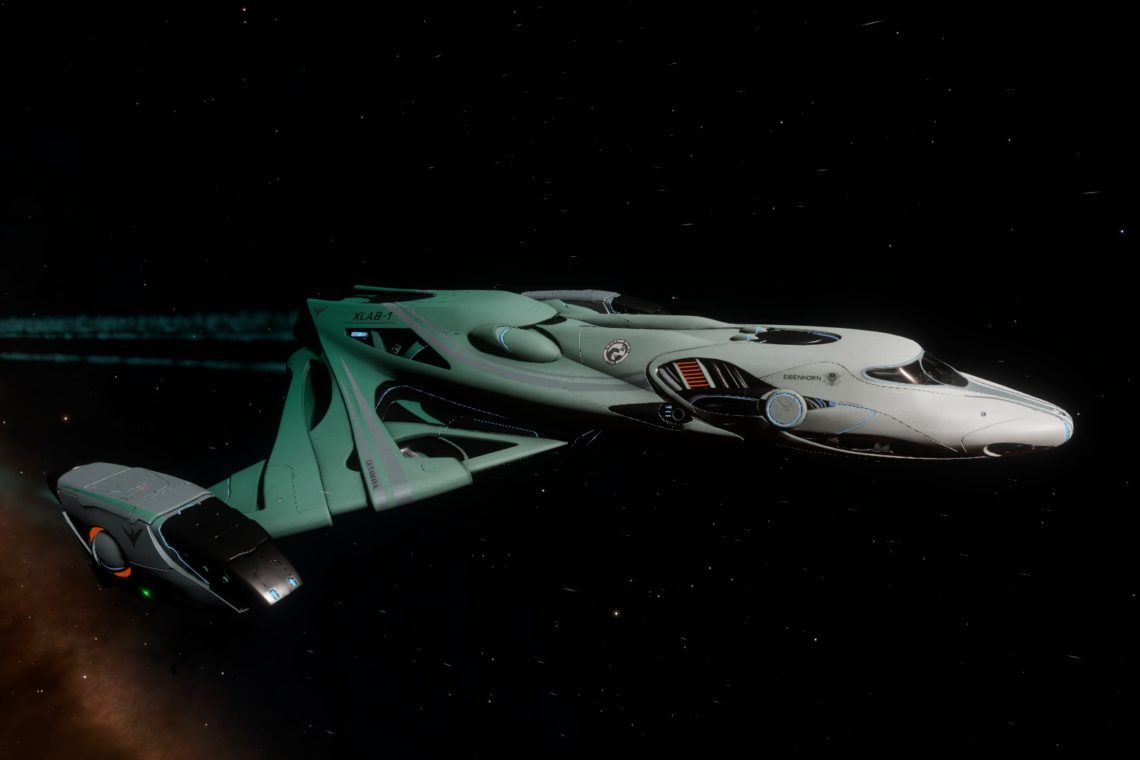Exploration and research ships in testing phase
This Sunday, Professor Sharrowkyn announced that the two Caustic Environment Exploration and Research Vessels (VEREC) are entering the testing phase. These vessels, true flying laboratories, carry specific modules and engineering to push exploration into the maelstroms. This second phase is the realization of the announcement made last week by MediCorp’s authorities.
Since this weekend, the Louis Pasteur has been carrying two laboratory vessels to attempt deeper exploration of the maelstroms and conduct numerous samples within these clouds.

The choice of Medicorp scientists has fallen on an Imperial Clipper (XLAB-1) and a Type 10 (XLBA-2) on which specific modifications have been made:
In the first place, we chose an Imperial Clipper hull because it is a large ship allowing for numerous module slots and particularly high speed. The ship is equipped with a very low thermal signature, allowing it to stay below the 20% threshold in normal operation. According to our initial analyses, the 20% threshold must be maintained if we want to approach the caustic generators. These generators, undoubtedly at the origin of the caustic cloud, explode like contact mines, but also if a significant thermal signature is detected in their vicinity. In order to collect the samples we need, we must approach within 1.5 km so that our research drones can operate. Stealth is therefore the first key, and the generators of the VEREC ships are modified to emit low emissions at the expense of their power. Finding the right balance is not easy, especially on smaller ships that we had initially considered, like the Dolphin, for example.
Next, due to the high toxicity of this caustic environment, the ship must carry many types of drones: collectors, repair drones, and of course research drones. Thus, a size 7 multidrone module seemed essential and therefore required choosing large ships.
Finally, if high speed does not seem important at this stage in the cloud, it is different in and around systems where maelstroms are located. Hyperdictions and interdictions are numerous; you must flee to survive. Speed is therefore paramount!
The Type-10 is the second ship we have equipped; it is even more heavily armored and can carry far more caustic samples. Its low speed and lack of agility are compensated by a huge self-repair capacity, allowing engineers to stay in the cloud for much longer. For now, this second ship is not yet fully operational. We need to change its generator: we had recovered one from one of our wrecks, but it is definitely not powerful enough for this mission.
A new module equips VEREC ships
This morning, MediCorp announced the successful acquisition of several Caustic Siphon launchers. These, installed in pairs on XLAB-1 and XLAB-2 to operate alternately, protect and purge the caustic effects suffered by the hull. It took numerous research and expeditions into the maelstroms to obtain these precious modules, whose commercialization was announced at the beginning of this month of March. Moreover, these modules have just passed into the hands of the engineer Ram Tah, who has increased the number of cartridges available for this equipment to 7 (instead of 5, ed.).
For now, no real-world tests have been conducted, but MediCorp indicates that these will begin early next week.
Fitting and gallery
XLAB-1 Imperial Clipper: configuration
XLAB-2 Type 10: configuration

